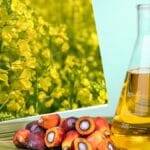Main Points In Hindi (मुख्य बातें – हिंदी में)
-
परियोजनाओं का कार्यान्वयन: संयुक्त राष्ट्र का खाद्य और कृषि संगठन (एफएओ) 21 नई परियोजनाओं का सह-नेतृत्व करेगा, जिसका उद्देश्य महामारी के लिए तैयारियों को मजबूत करना है। इन परियोजनाओं से 32 देशों को लाभ होगा, जिसमें कुल 109 मिलियन डॉलर का वित्त पोषण शामिल है।
-
अफ्रीका पर ध्यान: इस वित्त पोषण के तहत 50 प्रतिशत से अधिक धनराशि उप-सहारा अफ्रीका के लिए आवंटित की गई है, जो महामारी निधि अनुदान की सबसे अधिक मांग वाला क्षेत्र है। बुरुंडी, डेमोक्रेटिक रिपब्लिक ऑफ कांगो और रवांडा जैसे देशों को प्राथमिकता दी जाएगी।
-
क्रॉस-सेक्टर सहयोग: इस फंडिंग का उद्देश्य विभिन्न क्षेत्रों के बीच सहयोग को मजबूत करना, स्थायी वित्तपोषण को बढ़ावा देना और महामारी प्रबंधन में दक्षता में सुधार करना है। ये प्रयास न केवल तकनीकी क्षेत्रों को मजबूत करेंगे, बल्कि वैश्विक स्वास्थ्य सुरक्षा को भी बढ़ावा देंगे।
-
एफएओ की विशेषज्ञता: एफएओ की मौजूदा विशेषज्ञता, विशेषकर रोग निगरानी और पशु चिकित्सा सेवाओं में, वित्त पोषण के इस दौर में महत्वपूर्ण भूमिका निभाएगी, जिससे उभरते स्वास्थ्य खतरों का शीघ्र पता लगाने और प्रतिक्रिया देने में मदद मिलेगी।
- अंतर्राष्ट्रीय साझेदारी: एफएओ, राष्ट्रीय सरकारों और विभिन्न अंतर्राष्ट्रीय विकास भागीदारों के साथ मिलकर कार्य करेगा, जिससे महत्त्वपूर्ण वितरण भागीदारों के जरिए प्रभावी और प्रत्यक्ष वित्तीय सहायता प्राप्त की जा सके।
Main Points In English(मुख्य बातें – अंग्रेज़ी में)
Here are the main points summarized from the provided text:
-
FAO’s Leadership in Funding: The Food and Agriculture Organization (FAO) of the United Nations will co-lead the implementation of 21 new projects as part of the second round of funding from the Pandemic Fund, benefiting 32 countries worldwide with a total investment of $109 million.
-
Focus on Sub-Saharan Africa: More than 50% of the funding allocated in this round will benefit countries in Sub-Saharan Africa, which is identified as the region with the highest demand for pandemic funding.
-
One Health Approach: Supported countries, including Burundi, Democratic Republic of Congo, and Rwanda, will advance health security through projects based on the One Health approach, recognizing the interconnectedness of human, animal, and environmental health.
-
Diverse Country Involvement: Additional countries, such as Chad, Egypt, Ghana, and Indonesia, will also see significant investments in pandemic preparedness through FAO’s support, with multi-national projects planned in Africa, the Eastern Caribbean, and Southeast Asia.
- Collaboration with Implementing Partners: FAO will work in partnership with national governments, regional bodies, and international organizations like WHO, UNICEF, and the World Bank, leveraging its existing expertise in veterinary services to enhance technical capabilities and improve pandemic response efforts.


Complete News In Hindi(पूरी खबर – हिंदी में)
रोम – संयुक्त राष्ट्र का खाद्य और कृषि संगठन (एफएओ) वित्त पोषण के दूसरे दौर के हिस्से के रूप में 21 नई परियोजनाओं के कार्यान्वयन का सह-नेतृत्व करेगा। महामारी कोष. वैश्विक और स्थानीय स्वास्थ्य सुरक्षा को बढ़ाने के उद्देश्य से, कुल 109 मिलियन डॉलर की इन परियोजनाओं से दुनिया भर के 32 देशों को लाभ होगा।
सितंबर में एमपीओएक्स प्रभावित देशों के लिए चार फास्ट-ट्रैक परियोजनाओं की घोषणा की गई, अक्टूबर में 17 अतिरिक्त परियोजनाओं की घोषणा की गई।
इस दूसरे दौर के तहत प्रदान की जाने वाली 50 प्रतिशत से अधिक धनराशि उप-सहारा अफ्रीका के देशों के लिए है – यह क्षेत्र महामारी निधि अनुदान की सबसे अधिक मांग वाला क्षेत्र है।
जिन देशों को एफएओ का समर्थन प्राप्त होगा उनमें बुरुंडी, डेमोक्रेटिक रिपब्लिक ऑफ कांगो और रवांडा शामिल हैं जहां वन हेल्थ दृष्टिकोण के माध्यम से स्वास्थ्य सुरक्षा बढ़ाने के लिए परियोजनाओं को तेजी से आगे बढ़ाया जा रहा है। यह दृष्टिकोण मानव, पशु और पर्यावरणीय स्वास्थ्य की अन्योन्याश्रयता को स्वीकार करता है।
चाड, मिस्र, घाना, इंडोनेशिया, जॉर्डन, लेबनान, निकारागुआ, पाकिस्तान, फिलीपींस, समोआ, सिएरा लियोन, दक्षिण अफ्रीका, श्रीलंका, तंजानिया और ट्यूनीशिया जैसे अतिरिक्त देशों में भी महामारी संबंधी तैयारियों के लिए एफएओ के समर्थन से महत्वपूर्ण निवेश देखने को मिलेगा। अफ़्रीका, पूर्वी कैरेबियन और दक्षिण-पूर्व एशिया क्षेत्र में भी बहु-देशीय परियोजनाएँ होंगी।
यह फंडिंग दौर पहले दौर की तरह ही प्राथमिकताओं पर आधारित है, जिसमें सहयोगात्मक निगरानी, प्रयोगशाला क्षमता और कार्यबल विकास जैसे प्राथमिकता वाले तकनीकी क्षेत्रों को मजबूत करने के लिए अधिक देशों और क्षेत्रों का समर्थन किया गया है। फंडिंग का उद्देश्य क्रॉस-सेक्टर सहयोग को मजबूत करना, स्थायी वित्तपोषण का लाभ उठाना और महामारी की रोकथाम, तैयारी और प्रतिक्रिया प्रयासों में दक्षता में सुधार करना भी है।
नई परियोजनाएं एफएओ के महामारी फंड पोर्टफोलियो को उसके पांच क्षेत्रों-अफ्रीका, एशिया-प्रशांत, यूरोप और मध्य एशिया, लैटिन अमेरिका और कैरेबियन, और निकट पूर्व और उत्तरी अफ्रीका में 33 पहलों तक विस्तारित करेंगी-कुल मिलाकर 45 देशों का समर्थन करेंगी। लगभग $170 मिलियन।
वितरित करने के लिए, एफएओ राष्ट्रीय सरकारों, क्षेत्रीय निकायों और विश्व स्वास्थ्य संगठन (डब्ल्यूएचओ), संयुक्त राष्ट्र बाल कोष (यूनिसेफ), विश्व बैंक (डब्ल्यूबी) और एशियाई विकास बैंक (एडीबी) सहित अन्य कार्यान्वयन संस्थाओं के साथ साझेदारी कर रहा है। सरकारी एजेंसियां और समुदाय आधारित संगठन (सीबीओ) जमीन पर महत्वपूर्ण वितरण भागीदारों में से होंगे।
नवंबर 2022 में G20 बैठक के दौरान लॉन्च किया गया, विश्व बैंक समूह द्वारा आयोजित महामारी कोष, पहला बहुपक्षीय वित्तपोषण तंत्र है जो निम्न और मध्यम आय वाले देशों को भविष्य की महामारियों के लिए बेहतर तैयार होने में मदद करने के लिए समर्पित है। इसे एफएओ जैसी मान्यता प्राप्त कार्यान्वयन संस्थाओं द्वारा समर्थित देशों से आवेदन प्राप्त होते हैं, और फंड का गवर्निंग बोर्ड वित्त आवंटन पर सहमत होता है।
एफएओ की भूमिका
रोग निगरानी और प्रयोगशाला निदान सहित पशु चिकित्सा सेवाओं की मुख्य तकनीकी क्षमताओं को मजबूत करने में एफएओ की मौजूदा विशेषज्ञता, वित्त पोषण के इस दूसरे दौर में एक महत्वपूर्ण संपत्ति होगी।
उदाहरण के लिए, FAO के डिजिटल उपकरण जैसे EMA-i, inFARM, EMPRES-iऔर एसएमएस के माध्यम से अलर्ट, शमन के लिए तेजी से रिपोर्टिंग की अनुमति देता है और पशु स्वास्थ्य प्रयोगशालाओं के लिए गुणवत्ता आश्वासन और जैव सुरक्षा का समर्थन करता है।
संगठन के पास पशु चिकित्सा प्रयोगशालाओं और कार्यबल विकास का समर्थन करने का एक मजबूत ट्रैक रिकॉर्ड भी है, जिसमें एफएओ फील्ड पशु चिकित्सा महामारी विज्ञान प्रशिक्षण भी शामिल है, जो पशु चिकित्सा पेशेवरों को उभरते स्वास्थ्य खतरों का शीघ्र पता लगाने और प्रतिक्रिया देने के लिए तैयार करता है।
महामारी कोष से प्रत्यक्ष वित्तीय सहायता राष्ट्रीय सरकारों, विकास बैंकों और अंतर्राष्ट्रीय भागीदारों से आगे के निवेश को उत्प्रेरित करती है।
एफएओ और भागीदार अब सफल प्रस्तावों के लिए अंतिम अनुमोदन चरण में प्रवेश कर रहे हैं, जिसका पूर्ण कार्यान्वयन 2025 की शुरुआत तक शुरू होने की उम्मीद है।
Complete News In English(पूरी खबर – अंग्रेज़ी में)
Rome – The Food and Agriculture Organization (FAO) of the United Nations will co-lead the implementation of 21 new projects as part of the second round of funding from the Pandemic Fund. These projects, totaling $109 million, aim to enhance global and local health security and will benefit 32 countries worldwide.
In September, four fast-track projects were announced for countries affected by MPOX, followed by 17 additional projects in October.
More than 50% of the funding in this second round is allocated to countries in Sub-Saharan Africa, which is the region with the highest demand for pandemic fund grants.
Countries receiving support from FAO include Burundi, the Democratic Republic of Congo, and Rwanda, where projects are rapidly progressing to improve health security through a One Health approach, which recognizes the interconnectedness of human, animal, and environmental health.
Additional countries like Chad, Egypt, Ghana, Indonesia, Jordan, Lebanon, Nicaragua, Pakistan, the Philippines, Samoa, Sierra Leone, South Africa, Sri Lanka, Tanzania, and Tunisia will also see significant investments from FAO in pandemic preparedness. There will be multi-country projects in Africa, the Eastern Caribbean, and Southeast Asia as well.
This round of funding continues to focus on priority areas, such as strengthening collaborative monitoring, laboratory capacity, and workforce development, similar to the first round. The funding aims to enhance cross-sector collaboration, leverage sustainable financing, and improve efficiency in pandemic prevention, preparedness, and response efforts.
The new projects will expand FAO’s pandemic fund portfolio to a total of 33 initiatives across five regions: Africa, Asia-Pacific, Europe and Central Asia, Latin America and the Caribbean, and the Near East and North Africa, supporting a total of 45 countries with approximately $170 million.
To distribute the funding, FAO is partnering with national governments, regional bodies, and other implementation organizations including the World Health Organization (WHO), UNICEF, the World Bank (WB), and the Asian Development Bank (ADB). Government agencies and community-based organizations (CBOs) will also be key distribution partners.
Launched at the G20 meeting in November 2022, the Pandemic Fund, hosted by the World Bank Group, is the first multilateral financing mechanism dedicated to helping low- and middle-income countries better prepare for future pandemics. Countries receive applications supported by recognized organizations like FAO, and a governing board agrees on fund allocations.
FAO’s Role
FAO’s existing expertise in strengthening veterinary services, including disease surveillance and laboratory diagnostics, will be a valuable asset in this second round of funding.
For example, FAO’s digital tools like EMA-i, inFARM, EMPRES-i, and SMS alerts allow for rapid reporting and support quality assurance and biosecurity in veterinary laboratories.
The organization has a strong track record in supporting veterinary laboratories and workforce development, including FAO’s field veterinary epidemiology training, which prepares veterinary professionals to detect and respond to emerging health threats quickly.
Direct financial assistance from the Pandemic Fund helps to stimulate further investments from national governments, development banks, and international partners.
FAO and its partners are now entering the final approval phase for successful proposals, with full implementation expected to begin by early 2025.




